
10 Columnar Trees
Our selection and tips to ensure that verticality in the garden goes hand in hand with beauty
Contents
What motivations might drive a gardener to plant a columnar tree? To cast shade on a neighbour? To ensure the tree stands out from afar and serves as a landmark for visitors? Or perhaps to evoke the charm of a recent holiday in Tuscany?
In any case, columnar trees, which have an upright, fastigiate habit, are intended to bring verticality, punctuate different areas of the garden, frame a passage, or mark an entrance.
Before taking stock of these columnar trees in our collection of trees, a useful reminder to avoid issues with the infamous shaded neighbour: any tree that will reach a height of at least two metres must be planted at least two metres away from the property line. This way, the inconvenienced neighbour cannot demand that it be uprooted or reduced to a legal height!
Here is our selection of 10 upright trees to adopt in your garden, whether small or large.
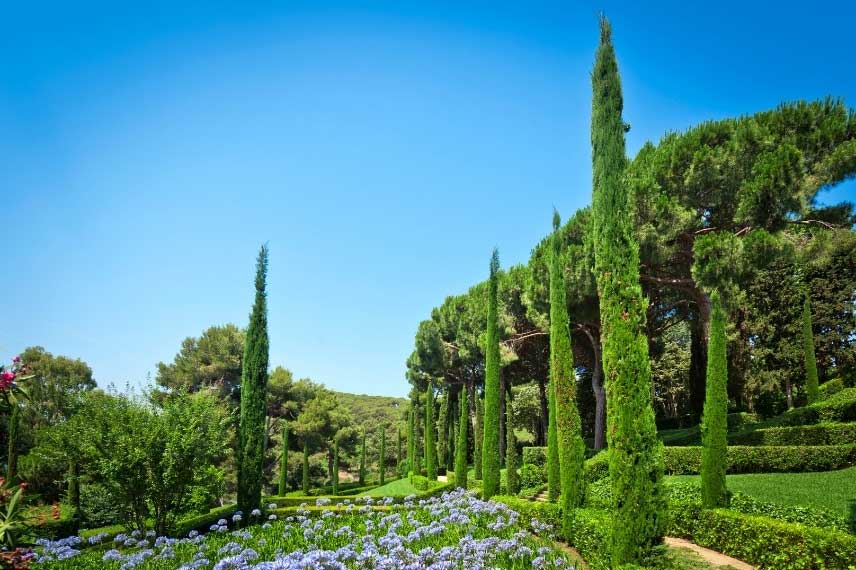
Columnar trees significantly alter the overall appearance of the garden
Cypress trees: from Florence, from Provence, and... the false cypress
When thinking of a “columnar tree,” the image of the Florence cypress immediately comes to mind. With a remarkable longevity of over 500 years, the Cupressus sempervirens ‘Totem’ grows rapidly in the first few years after planting, reaching an impressive height of around 12 metres. The advantage of the Florence cypress is its lack of fruiting, those small balls found on other cypresses that bend the branches with their weight and frustrate meticulous gardeners. It therefore maintains a beautiful, upright silhouette, highlighting the importance of punctuation and rhythm in the garden. The Provence cypress, Cupressus sempervirens ‘Pyramidalis’, also has a columnar habit and will reach the same height. So it cannot be repeated enough: plant it at least 2 metres away from your neighbour! The Cupressus evoke the Mediterranean, they tolerate dry, poor, and stony soil. A pathway lined with lavenders or perovskia and punctuated with cypresses will transport you to the South, without the August traffic jams! In cooler, more fertile soil, the Lawson false-cypress, or blue thuja – Chamaecyparis lawsoniana ‘Columnaris’ – also has a beautiful fastigiate habit. It grows quickly to reach about 7 metres. These cypresses – true or false – serve to punctuate the garden and structure the flowerbeds. Their silhouette adds elegance, height, and a certain nobility to the garden.
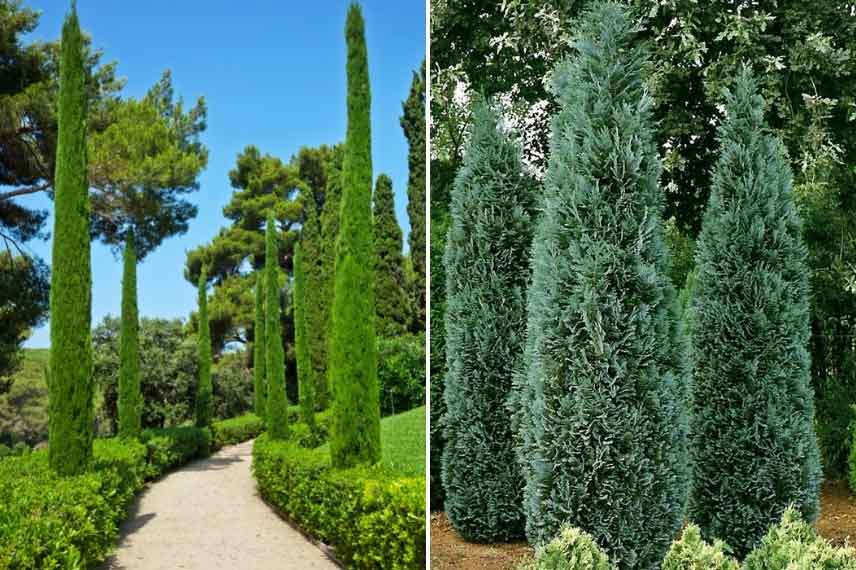
Cupressus sempervirens ‘Totem’ and Chamaecyparis lawsoniana ‘Columnaris’
Read also
Trees and bushes: different habitsThe Japanese cherry tree ‘Amanogawa’: a pink marvel in spring
The Prunus serrulata ‘Amanogawa’ is a Japanese cherry… native to China! Its name means “Milky Way” because its fragrant flowers are held at the tips of well-vertical branches. Indeed, in April-May, just before the leaves, a multitude of soft pink flowers appear on this tree with a very upright habit that will reach a height of about 7 metres, with a spread of 1 metre. It loves the sun and prefers rather neutral to slightly calcareous soils. After flowering, the leaves emerge and take on various hues, ranging from bronze yellow in spring to crimson red and gold in autumn, with deep green in between. This Japanese cherry is ideal for small spaces. It will easily find its place in the sun, among perennials and bushes whose flowering will complement its colours. You can associate it with:
- Japanese quinces Chaenomeles speciosa ‘Kinshiden’ with creamy spring flowers, and superba ‘Nicoline’ in scarlet colour,
- hardy geraniums ‘Blushing Turtle’ and himalayense ‘Derrick Cook’,
- or plant it above a mass of grasses like the Chinese fountain grass (Pennisetum alopecuroides ‘Cassian’).
You can also, of course, plant it in isolation in the middle of a dreary lawn or standing out in front of a darker conifer hedge.
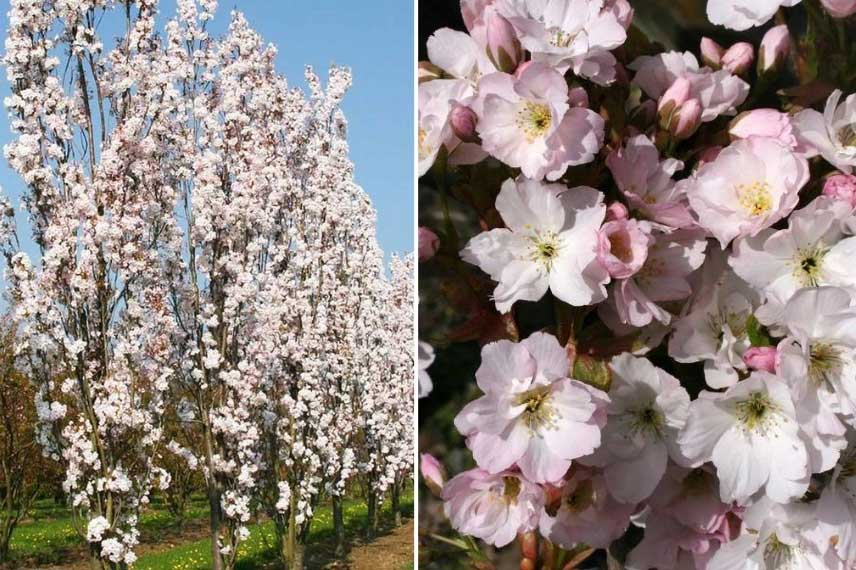
Prunus serrulata ‘Amanogawa’
Discover other Upright trees
View all →Available in 0 sizes
Available in 1 sizes
Available in 1 sizes
Available in 1 sizes
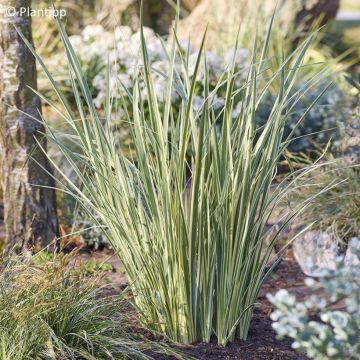
Available in 1 sizes
Available in 1 sizes
Available in 1 sizes
Available in 1 sizes
Available in 2 sizes
Available in 1 sizes
Red Maple: a red marvel in autumn
Also known as Freeman Maple, the Acer rubrum ‘Armstrong’ is a deciduous tree with a narrow, upright habit, whose beautiful glossy green foliage turns a stunning red in autumn. A hybrid between Acer rubrum and Acer saccharinum and native to North America, it quickly reaches a height of 12 metres with a spread of about 4 metres. It is best suited to non-calcareous, rich, and moist soils. Hardy, it thrives in full sun or partial shade. Due to its relatively large size, it should be given a place as a specimen tree, or at the back of a large border accompanied by plants that prefer acidic and moist soil such as:
- the campanulate Andromeda (Enkianthus campanulatus ‘Red Bells’),
- the Japanese dogwood (Cornus kousa),
- the Skimmia,
- the Pieris,
- or even hydrangeas.

Acer rubrum ‘Armstrong’
Read also
10 shade treesThe fastigiate birch
Birch is a well-known tree in the landscapes of Europe. Betula pendula ‘Fastigiata’ is the fastigiate birch or verrucate, named for the verrucate resin glands (shaped like warts…) present on its branches. Its characteristic white bark darkens with age, and in spring, it flowers in the form of male and female aments. It reaches a height of about fifteen metres and grows quickly. Deciduous, it is both very hardy and drought-resistant, tolerating all types of soil, even very dry and poor soils. It is therefore a low-maintenance tree that is very easy to cultivate. At maturity, it will reach between 10 and 15 metres, and its elegant, upright habit makes it suitable for planting alone or in alignment, or in a large bed accompanied by remarkable trees with a more spreading habit, where its beautiful golden-yellow autumn colouring can stand out.
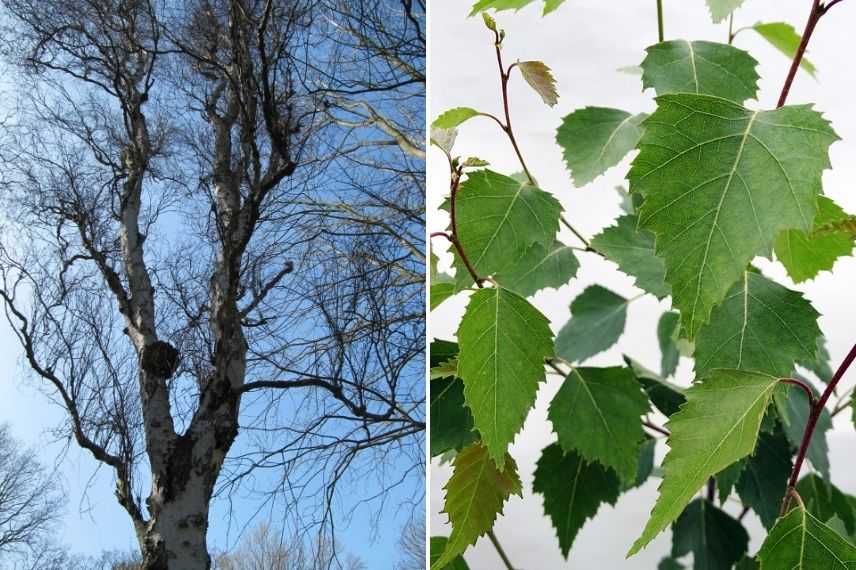
Betula pendula ‘Fastigiata’
Fastigiate Hornbeam
Carpinus betulus ‘Fastigiata’ is the fastigiate variety of hornbeam. It is a relatively large tree, reaching a height of around fifteen metres with a spread of 5 metres. Its deciduous foliage is stunning, displaying a lovely soft green that turns a beautiful orange hue in autumn. This European tree has a fairly rapid growth rate and thrives in rich, cool soil, even clayey or calcareous. It prefers full sun or light shade and cannot tolerate excessive heat or drying winds. In an English-style garden, it can be planted as a backdrop to beautifully trimmed hornbeam hedges, among blue, yellow, and cream perennials such as Nepeta faassenii ‘Walker’s Low’, Salvia nemorosa ‘Caradonna’, Baptisia Carolina ‘Moonlight’, and Achillea millefolium ‘Alabaster’.
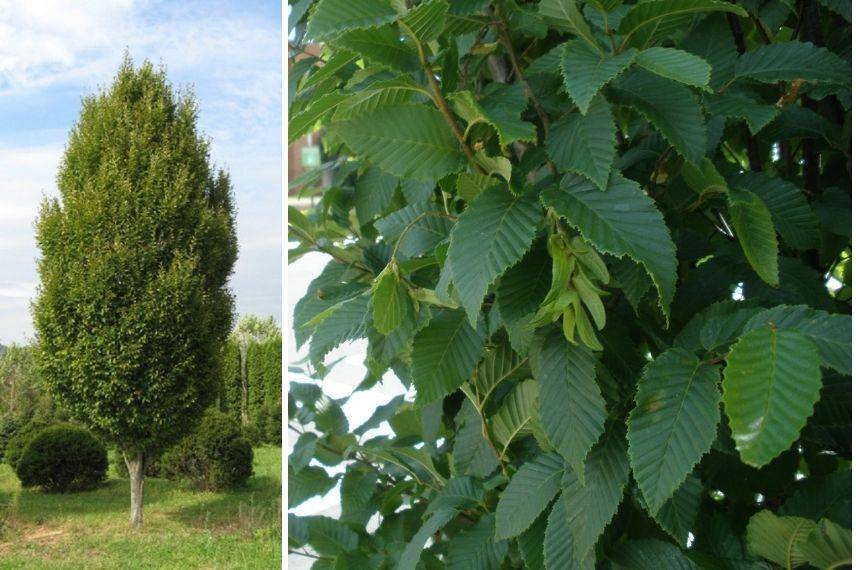
Carpinus betulus ‘Fastigiata’
The fastigiate Tulip tree
Reserved for larger gardens, the Tulip Tree is a very beautiful tree with an upright habit, native to the United States. Liriodendron tulipifera, the type species can reach a height of around twenty metres in our gardens, but it is the fastigiate variety, Liriodendron tulipifera ‘Fastigiata’ that is the most… fastigiate (as proven). It is more suitable for smaller gardens as it does not exceed 15 metres with a spread of about 7 metres. Both have large and beautiful typical deciduous leaves and especially a remarkable flowering with yellow-orange tulip-shaped flowers. Finally, Liriodendron tulipifera ‘Aureomarginatum’ is the variety with variegated foliage as its bright green leaves are edged in yellow. It is often planted as a specimen, but can also fit into a large bed alongside flowering bushes and perennials where its beautiful light green foliage will bring brightness. It can also be planted in alignment.
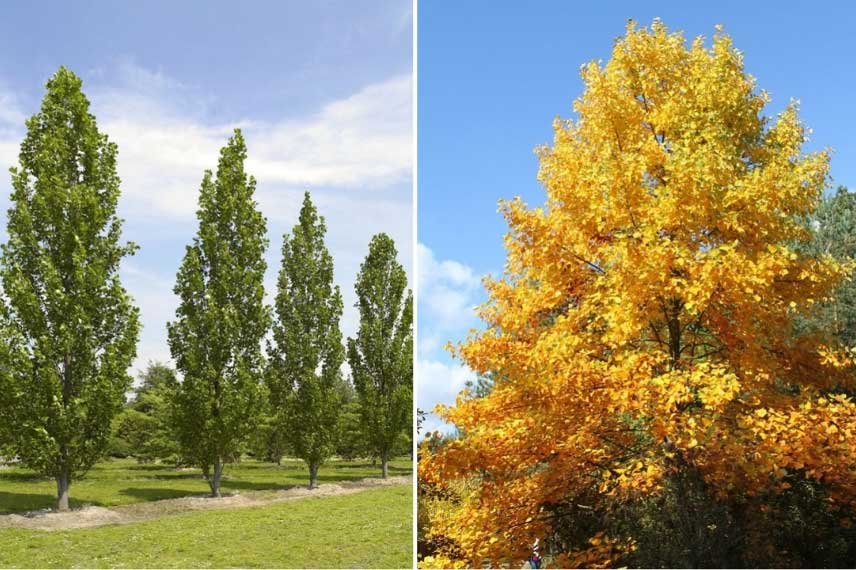
Liriodendron tulipifera ‘Fastigiata’
The Ginkgo biloba 'Menhir'
Sacred tree in the East, the only plant species to have survived the atomic attacks on Hiroshima and a living fossil, Ginkgo biloba, or the Maidenhair tree, is a dioecious tree (individuals are either male or female) with distinctive fan-shaped leaves. Ginkgo biloba ‘Menhir’ is a male variety with a narrow, upright habit, which will grow quite slowly at first to reach about fifteen metres in height. It thrives in full sun in any well-drained soil and tolerates drought and limestone. It does not like excess moisture. Like the previous one, it can be planted in isolation, combined in a bed with various bushes and perennials, or in alignment. Its remarkable golden-yellow autumn colour will bring interest and beautiful brightness to the season.
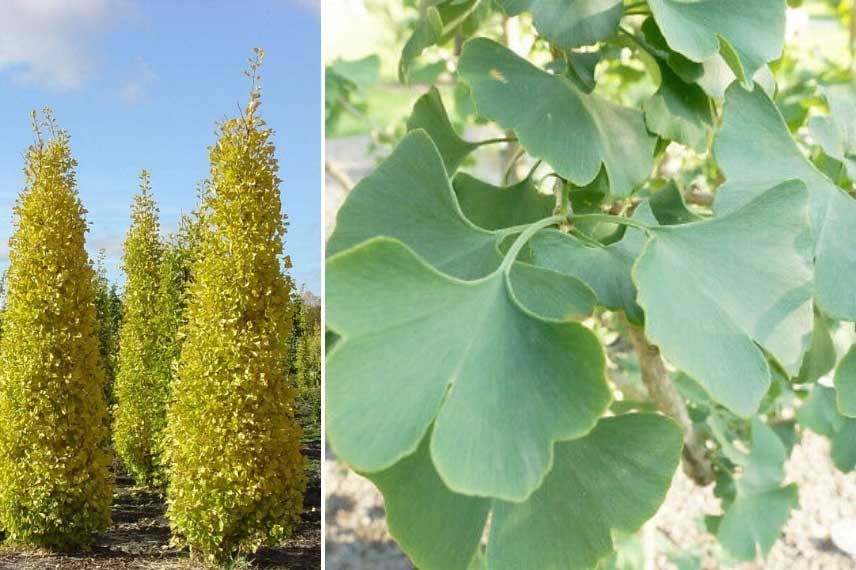
Ginkgo biloba ‘Menhir’
The Italian poplar
This poplar is well known to all. Populus nigra ‘Italica’ is an impressive tree with a very rapid growth rate. Native to the Northern Hemisphere, it is deciduous and very hardy. The poplar is therefore best suited for large spaces, where its significant growth will not be a hindrance, as it can reach a height of 30 metres with a spread of around 5 metres. It adapts to all soils, preferably cool, and its foliage takes on a beautiful golden yellow hue in autumn.
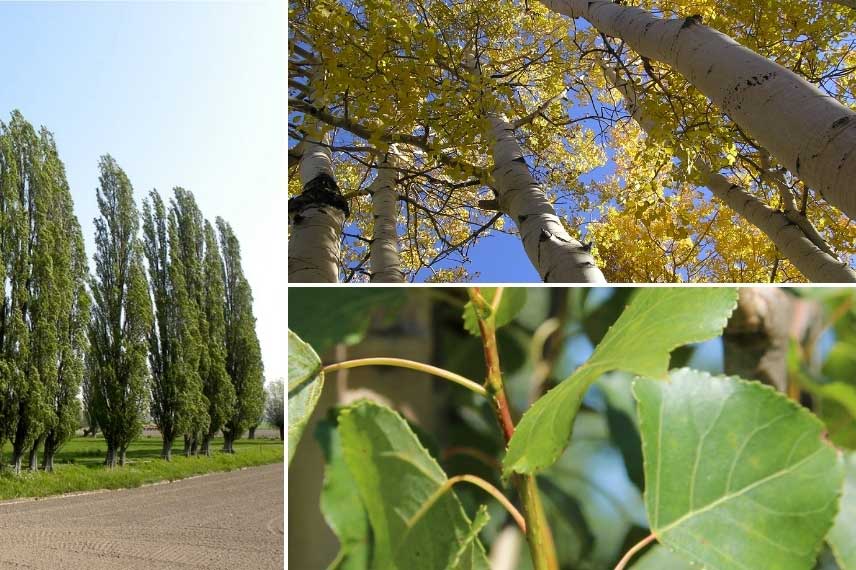
Populus nigra ‘Italica’
- Subscribe!
- Contents
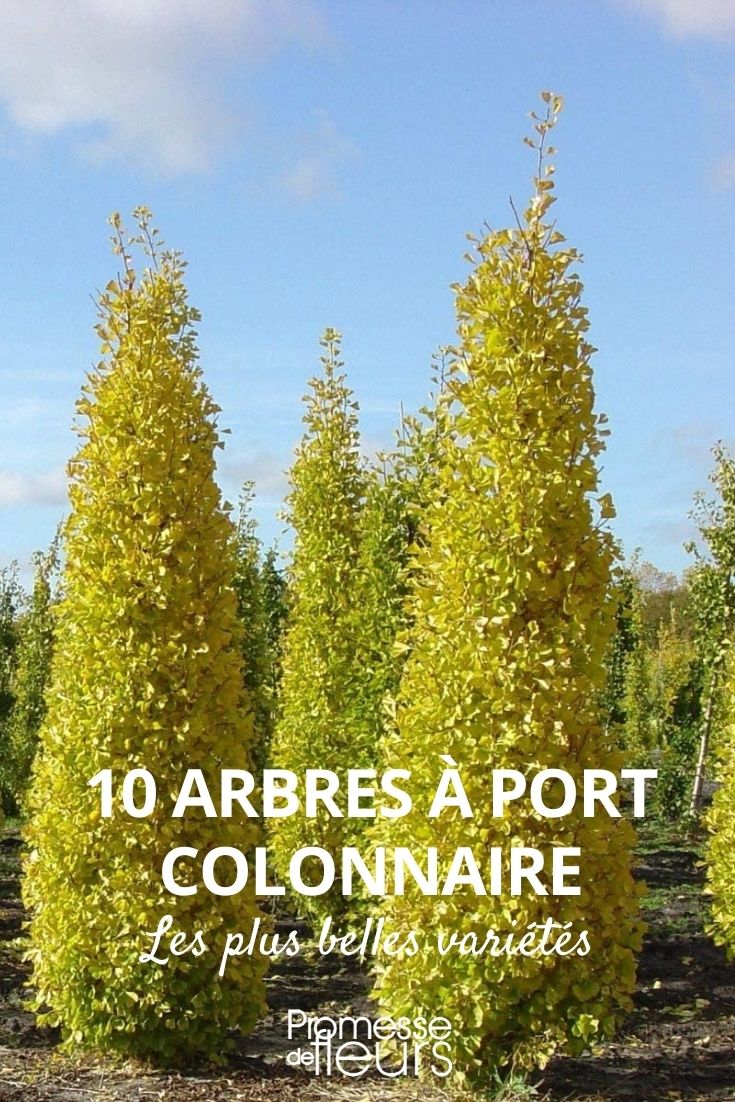
































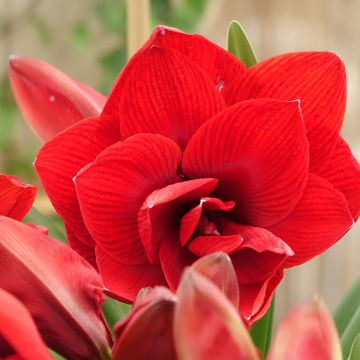


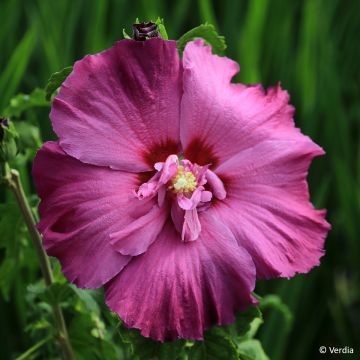
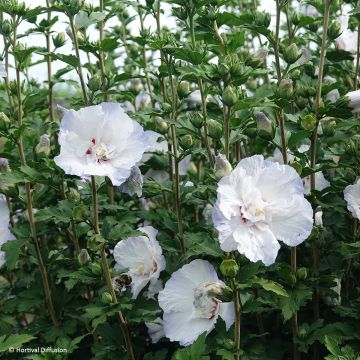
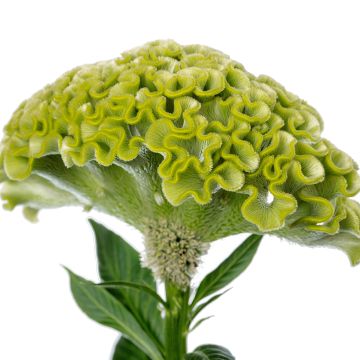
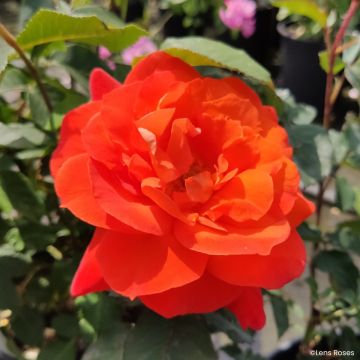
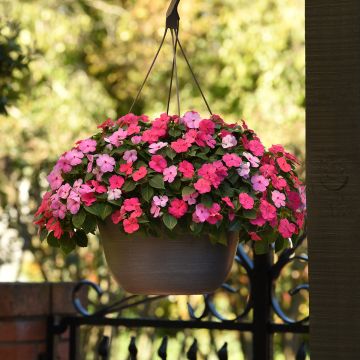
Comments